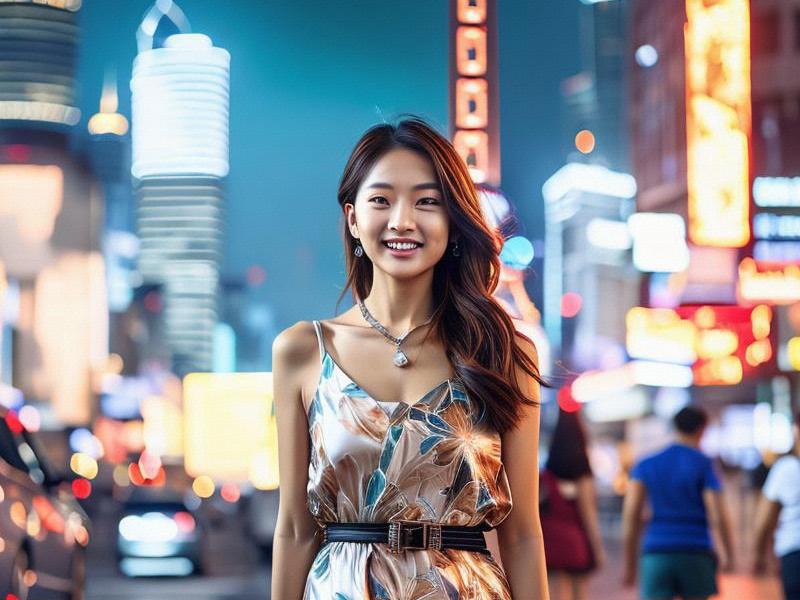This article delves into the captivating world of Shanghai beauties, exploring their evolution through the decades, the influence of fashion and culture, and their enduring allure in the modern era. From the elegance of the 1920s to the dynamic style icons of today, Shanghai's women have always been a symbol of beauty and sophistication.

Shanghai, a city that has long been synonymous with elegance and charm, has a rich history of beauty that spans over a century. The term "Shanghai beauties" has become a cultural icon, representing not just physical attractiveness but also a certain lifestyle and attitude. This article takes a journey through time to explore the evolution of Shanghai beauties, their influence on fashion and culture, and their enduring allure in the modern era.
In the early 20th century, Shanghai was known as the Paris of the East, a cosmopolitan hub where Eastern and Western cultures交融融合 (merged/fused) (merged/fused). The women of this era, often referred to as "Shanghai dolls," embodied a unique blend of traditional Chinese beauty and Western sophistication. Their style was characterized by the qipao, a form-fitting dress that accentuated their figures, paired with high heels and adorned with intricate embroidery. These women were not only beautiful but also educated and independent, often holding positions in business or the arts.
The 1920s and 1930s were a golden age for Shanghai beauties. The city was a center of cultural and artistic activity, attracting writers, artists, and intellectuals from all over China. The women of this era were known for their grace, intelligence, and fashion sense. They frequented the famous cabarets and nightclubs, such as the Canidrome and the Paramount Ballroom, where they dazzled audiences with their beauty and charm. The iconic image of the Shanghai belle, with her cigarette holder and silk cheongsam, became a symbol of the city's vibrant nightlife and cosmopolitan culture.
上海龙凤419自荐 The rise of the Communist Party in 1949 brought significant changes to Shanghai and its people. The city's fashion and beauty standards underwent a transformation, reflecting the new political and social order. The qipao, once a symbol of elegance, was replaced by more practical and uniform clothing. The focus shifted from individual expression to collective identity, and the glamour of the Shanghai beauties of the past was replaced by a more modest and utilitarian aesthetic.
However, the spirit of Shanghai beauty did not disappear entirely. During the 1960s and 1970s, while the rest of China was undergoing the Cultural Revolution, Shanghai remained a bastion of fashion and culture. The city's women continued to embrace beauty and style, albeit in a more subdued manner. They found ways to express their individuality through subtle accessories and hairstyles, maintaining a sense of elegance and sophistication amidst the political turmoil.
The 1980s marked a renaissance for Shanghai and its beauties. As the city began to open up to the world, it experienced a period of rapid economic growth and modernization. The fashion industry flourished, and Shanghai once again became a trendsetter. The women of this era embraced a more Westernized style, incorporating elements of international fashion into their wardrobes. High heels, designer clothing, and bold makeup became the norm, reflecting the city's newfound confidence and global outlook.
上海品茶论坛
In the 1990s and early 2000s, Shanghai beauties continued to evolve, reflecting the city's status as a global financial hub. The rise of the internet and social media provided new platforms for self-expression, and Shanghai's women became some of the most photographed and admired in the world. Influential figures such as Du Juan, a renowned Chinese supermodel, and the "Shanghai Girls" of the entertainment industry, showcased the city's modern and dynamic beauty.
Today, Shanghai beauties are a diverse and multifaceted group, representing a wide range of styles and personalities. They are not confined to a single image or standard but are celebrated for their individuality and authenticity. From the high-fashion models on the runways of Paris and New York to the stylish professionals navigating the bustling streets of Shanghai, these women embody the city's unique blend of tradition and modernity.
上海品茶网 The influence of Shanghai beauties extends beyond fashion and beauty. They are role models for young women, inspiring them to pursue their dreams and embrace their individuality. The city's beauty industry, which includes fashion, cosmetics, and wellness, continues to thrive, reflecting the enduring appeal of Shanghai's women.
Shanghai's beauty is not just about physical appearance but also about the city's rich history, vibrant culture, and dynamic spirit. The women of Shanghai have always been at the forefront of change, adapting to new trends and challenges while maintaining their unique identity. They are a testament to the city's resilience and creativity, embodying the essence of Shanghai's beauty.
In conclusion, the allure of Shanghai beauties lies in their ability to transcend time and trends, remaining a symbol of elegance and sophistication. From the glamorous Shanghai dolls of the 1920s to the modern-day style icons, these women have always been a source of inspiration and admiration. As Shanghai continues to evolve and grow, its beauties will undoubtedly remain a vital part of the city's cultural heritage, captivating the world with their beauty and charm.
The story of Shanghai beauties is not just a tale of fashion and style but also a reflection of the city's history and culture. It is a story of resilience, creativity, and the enduring power of beauty. Shanghai's women have always been at the heart of the city's narrative, and their story is one that will continue to inspire and captivate for generations to come.